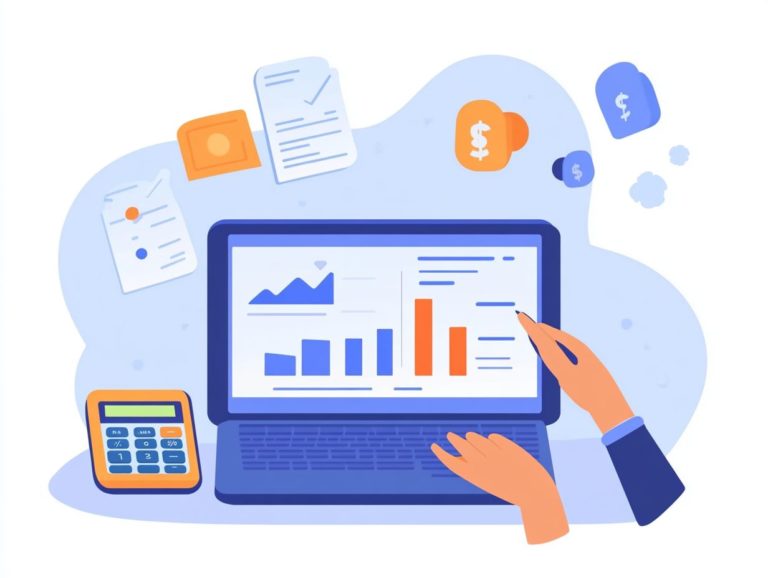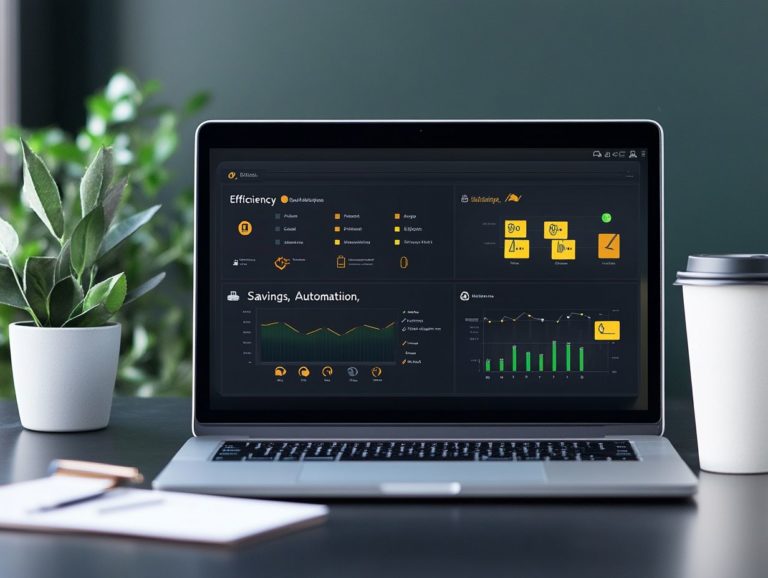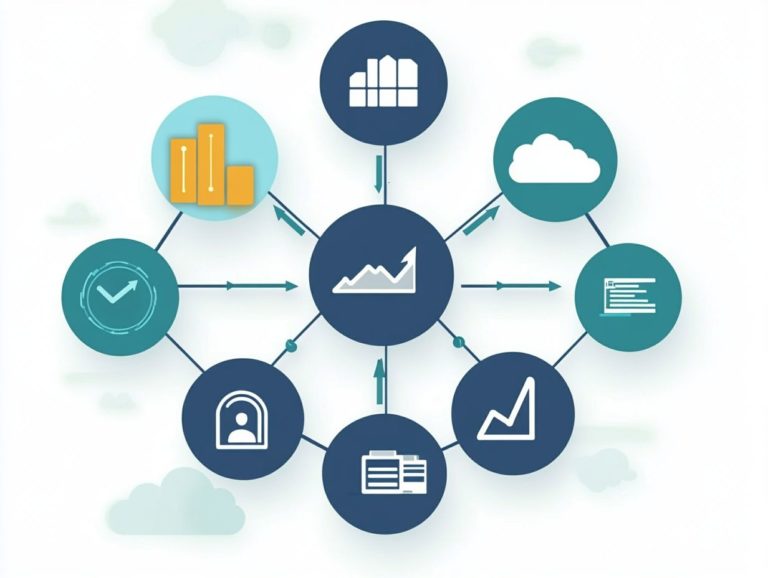How to Navigate Cloud Cost Complexity
Navigating the complexities of cloud costs can present a formidable challenge for businesses of all sizes. As your organization increasingly relies on cloud services, understanding the different cloud costs and the factors that drive up expenses becomes essential.
This article explores common pitfalls in cloud cost management and examines the potential impact these challenges can have on your operations while offering actionable strategies for optimization. By providing insights into future trends, you will have the tools necessary to tackle the complexities of cloud costs effectively.
Contents
- Key Takeaways:
- The Basics of Cloud Cost Complexity
- Challenges of Managing Cloud Costs
- Best Practices for Navigating Cloud Cost Complexity
- Future Trends in Cloud Cost Management
- Frequently Asked Questions
- What is cloud cost complexity and why is it important to navigate?
- What are some common challenges when trying to navigate cloud cost complexity?
- How can I effectively navigate cloud cost complexity?
- What are some strategies for optimizing cloud costs?
- Can I use a third-party tool to help navigate cloud cost complexity?
- How can I ensure long-term cost efficiency when navigating cloud cost complexity?
Key Takeaways:

Understand the different cloud cost structures and factors that contribute to complexity to effectively manage and reduce unexpected cloud costs.
Avoid common pitfalls and mistakes in cloud cost management to prevent negative impacts on business operations, and stay informed about the future of cloud cost management.
Implement strategies for cost optimization and utilize tools and resources for effective cost management.
The Basics of Cloud Cost Complexity
Understanding cloud cost complexity is vital for any organization using cloud resources. As you choose multi-cloud architectures, you’ll see various costs that change based on usage and service providers, making it important to explore cloud cost management strategies.
Effectively managing these costs requires a comprehensive cloud cost management strategy that combines financial accountability with ongoing monitoring to ensure cost transparency and operational efficiency. To optimize your cloud expenditures and uncover hidden costs that could impact your bottom line, understanding how to use analytics for cloud cost management is essential.
Understanding Cloud Cost Structures
Cloud cost structures include pricing models like pay-as-you-go, reserved instances, and savings plans, each significantly influencing your overall spending on cloud resources. Understanding these models is essential for effective cloud budgeting and cost management.
The pay-as-you-go approach offers flexibility, allowing you to pay for compute costs based on actual consumption, thus avoiding unnecessary expenses. Conversely, reserved instances provide a predictable budgeting option, requiring a commitment to specific resource usage over time, often leading to substantial discounts.
Savings plans also help optimize your expenses by offering discounts in exchange for a commitment to a certain level of usage. By grasping these intricacies, you can develop more precise cost control strategies that align resource allocation with financial planning.
Factors Contributing to Complexity
Several factors add to the complexity of managing cloud costs, including fluctuating usage patterns and billing granularity. To effectively tackle these challenges, learning how to optimize cloud costs is essential, as potential security vulnerabilities can also lead to unexpected expenses.
These challenges can overwhelm finance and IT teams. However, adopting cost optimization strategies can significantly alleviate that strain. Implementing robust monitoring tools and right-sizing resources allows you to gain deeper insights into your cloud usage.
This not only enhances operational efficiency but also minimizes waste, ultimately leading to more predictable and manageable cloud expenditures.
Challenges of Managing Cloud Costs

Managing cloud costs? It can be a real challenge! The ever-evolving landscape of cloud services complicates tracking expenses across various environments and service providers, but learning how to prepare for cloud cost audits can help simplify the process.
To overcome these challenges, consider implementing the strategies discussed in this article. Equip your organization with the necessary tools for effective cloud cost management!
Common Pitfalls and Mistakes
Organizations often fall into common traps in cloud cost management. These include neglecting budget alerts, mismanaging resource allocation, and overlooking cost anomalies that can lead to unexpected charges.
Such issues create financial uncertainty, causing expenses to spiral out of control. Underutilization of resources occurs when teams provision more capacity than needed, wasting valuable budget.
Inadequate monitoring can lead to missed cost savings. Teams may remain unaware of idle resources that could be decommissioned.
Implementing automated budget alerts and regularly reviewing resource use provides essential insights. Cultivating a culture of vigilant cost oversight enables teams to manage spending proactively.
Impact on Business Operations
Unmanaged cloud costs can severely impact business operations, customer trust, and service delivery. Soaring cloud expenses without a strategic plan not only strains the budget but also sows skepticism about service reliability.
This doubt can erode customer loyalty and negatively affect your bottom line. Operational efficiency suffers as teams focus more on cost management rather than innovation.
Inefficient resource usage can lead to unpredictable service disruptions, alienating clients further. Aligning your cloud cost management with operational objectives is essential for success.
This alignment leads to financial stability and service excellence, paving the way for business sustainability.
Embracing best practices in cloud cost management is vital for optimizing expenditure. This ensures efficient resource use and high financial accountability.
Strategies for Cost Optimization

Effective strategies include adjusting resources, implementing savings plans, and proactively managing cloud spending to eliminate waste. Regularly auditing cloud usage ensures resources match actual application demands.
Utilizing monitoring tools helps identify underutilized instances, allowing informed decisions about downsizing or terminating assets. Setting up automated alerts for spending thresholds enables quick responses to unexpected cost increases.
Establishing clear guidelines for cloud usage enhances accountability and operational efficiency. This fosters a culture of cost awareness within your organization.
Tools and Resources for Cost Management
Using effective cloud management software is essential for organizations looking to streamline cost management. Tools like AWS Cost Explorer, Azure Cost Management, and Google Cloud tools provide significant benefits.
These resources help your teams analyze spending patterns and budget effectively. Advanced analytics pinpoint overspending areas and optimize resource allocation, ensuring you only pay for what you need.
The right cloud cost management solutions enhance visibility and support strategic decision-making, paving the way for better financial planning.
Future Trends in Cloud Cost Management
Navigating cloud cost management reveals emerging trends that will transform the landscape. For those looking to save, understanding how to optimize your cloud storage costs through collaboration between FinOps teams and enhanced cost management strategies is crucial.
This collaboration leads to more efficient and effective management of cloud expenses.
Predictions and Potential Solutions
Future predictions for cloud cost management indicate a greater reliance on analytics and machine learning. These technologies can help identify cost issues and improve budgeting.
As more businesses move to the cloud, finding smart solutions is vital. This helps manage rising costs and use resources wisely.
Tools like automated cost forecasting and customized benchmarking can aid decision-making. Financial analysts will play a crucial role by using data to create effective strategies.
By promoting collaboration between finance and tech teams, you enhance understanding of cloud usage and its financial impact.
Frequently Asked Questions

Cloud cost complexity involves the many factors that affect the price of cloud services. It matters because, without proper management, businesses can overspend and waste resources.
Common challenges include understanding usage patterns, managing budgets, and keeping up with fluctuating prices and discounts.
To effectively navigate cloud cost complexity, understand your cloud infrastructure and usage patterns. Regularly monitor and optimize costs by navigating cloud pricing structures, utilizing cost management tools and strategies.
What are some strategies for optimizing cloud costs?
Strategies include adjusting resources to meet actual needs, using reserved instances, implementing automation and governance, and regularly reviewing budgets and allocations.
Yes, many cost management tools are available to assist businesses. These tools offer features like cost tracking, optimization recommendations, and budgeting capabilities.
To ensure long-term cost efficiency, regularly review usage and costs, stay updated on new cloud offerings, and continuously optimize resources and strategies for savings.






